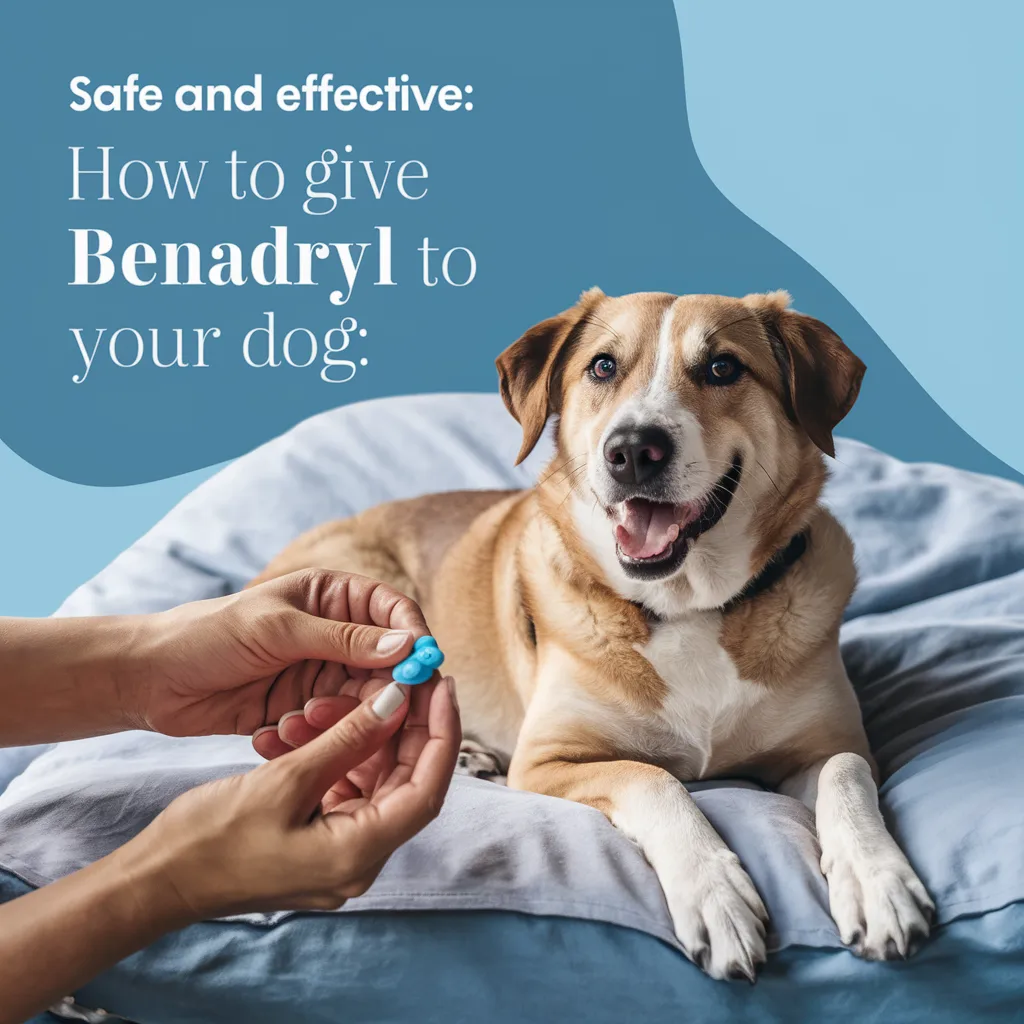Safe and Effective: How to Give Benadryl to Your Dog

When your dog is suffering from allergies, anxiety, or even motion sickness, Benadryl can be a safe and effective solution. However, it’s essential to know the correct dosage and administration to ensure your pet’s safety. Here’s everything you need to know about giving Benadryl to your dog.

What is Benadryl?
Benadryl, also known by its generic name diphenhydramine, is an antihistamine commonly used to treat allergic reactions, itching, and other symptoms in both humans and dogs. It can also help with anxiety, motion sickness, and even insect bites.
When to Use Benadryl for Dogs
- Allergic Reactions: Reduces symptoms like itching, swelling, and hives.
- Motion Sickness: Helps calm your dog during car rides.
- Anxiety: Can be used for mild anxiety or stress, such as during fireworks or thunderstorms.
- Insect Bites and Stings: Reduces swelling and itching from bites and stings.
Proper Dosage
The general guideline for Benadryl dosage is 1 mg per pound of body weight. Here’s a simple breakdown:
- Small Dogs (under 30 lbs): 10-30 mg
- Medium Dogs (30-50 lbs): 25-50 mg
- Large Dogs (over 50 lbs): 50-75 mg
It’s important to consult your veterinarian before giving your dog Benadryl, as they can provide the best dosage for your pet’s specific needs.
How to Administer Benadryl
- Choose the Right Form: Benadryl comes in tablets, capsules, and liquid form. Tablets are the easiest to dose accurately.
- Mix with Food: To make it easier for your dog to take, you can hide the tablet in a piece of cheese or a pill pocket.
- Measure Carefully: If using liquid Benadryl, make sure to measure the correct dosage using a syringe or a measuring spoon.
- Monitor Your Dog: After administering, keep an eye on your dog for any adverse reactions, such as excessive drowsiness or vomiting.
Potential Side Effects
While Benadryl is generally safe for dogs, some may experience side effects, including:
- Drowsiness
- Dry mouth
- Urinary retention
- Increased heart rate
If your dog shows any severe reactions, contact your vet immediately.
Precautions
- Avoid Human Formulas with Additives: Some human Benadryl formulas contain ingredients like alcohol or artificial sweeteners, which can be harmful to dogs.
- Consult Your Vet: Always talk to your vet before starting any new medication to ensure it’s safe for your dog, especially if they have underlying health conditions.
Fun Fact:
- Benadryl can also be used to help with motion sickness during travel. Giving your dog the correct dosage 30 minutes before a car ride can make the journey more comfortable for them.
Conclusion
Benadryl can be a helpful remedy for a variety of canine ailments when used correctly. Always consult your veterinarian for guidance on the proper dosage and administration to ensure your dog’s safety. With the right knowledge, you can help your furry friend feel better and enjoy a happier, healthier life.



